Fanon hier, Fanon aujourd'hui : Regards croisés
Fanon yesterday, Fanon today: converging views
ENGLISH VERSION BELOW
Frantz Fanon
On sort de la lecture de sa bibliographie avec une réelle frustration . La brièveté de l'existence de Frantz Fanon et ses accomplissements nous donnent un soupçon de ce que son œuvre et sa pensée auraient pu être s'il avait vécu quelques années, quelques décennies de plus.
Comment ne pas regretter ce temps qui a manqué à ce visionnaire généreux, ce qu'il aurait pu produire. Combien ce regard nous manque aujourd'hui, mais sa clarté demeure intacte tout comme la puissance de l’analyse. La pensée de Fanon reste omniprésente dans toute son incandescence dans l’actualité des luttes pour la liberté et la désaliénation de l’humanité.

Présentation du film
Fanon émerge de ces témoignages comme un être vivant sans autre certitude que celles de la désaliénation et de la liberté. Loin des idées reçues, Fanon apparait dans ses dimensions les plus humaines et les plus politiques : nuancé, radical et mesuré.
Nous avons eu la chance de rencontrer et d’échanger avec des femmes et des hommes qui ont croisé Frantz Fanon, qui ont eu de longues conversations avec lui. Aucun de celles et ceux qui ont eu ces moments de partage avec Fanon n’a oublié l’homme et la passion qui l’habitait.
Ces regards humains, sensibles et très divers esquissent les contours vivants d’une personnalité complexe, riche, nourrie de contradictions mais lucide et l’esprit toujours en éveil. Ces évocations permettent de brosser le portrait d’un homme engagé, vibrant à mille lieues de l’embaumement ou de l’iconification que les hagiographies finissent par produire. « O mon corps, fais de moi toujours un homme qui interroge »
Ousmane DAN GALADIMA : Membre du mouvement Sawaba au Niger. Il joint le FLN lors de l'ouverture du Front Sud à la frontière malienne où il rencontrera Frantz Fanon. Ils se rencontrent régulièrement à Accra au Ghana.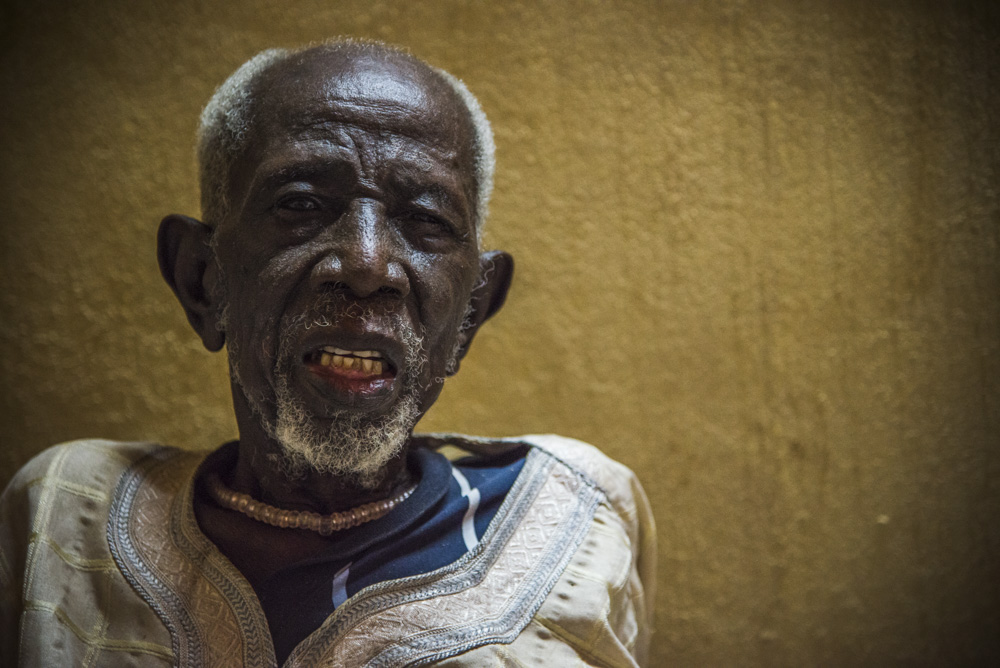
Lilian KESTELOOT : Ancienne professeure à l' UCAD (Université Cheikh Anta Diop) et ancienne directrice de l'IFAN (Institut Fondamental d'Afrique noire) de DAKAR.
Elle rencontre Frantz Fanon lors du deuxième Congrès des écrivains et artistes noirs à Rome en 1959 et partage de longues discussions avec lui.
Marie-Jeanne MANUELLAN : Assistante sociale au CNPJ de l'hôpital Charles Nicolles de Tunis. Elle Travaille avec Frantz Fanon, devient une amie de la famille. Elle tape à la machine à écrire plusieurs livres sous sa dictée.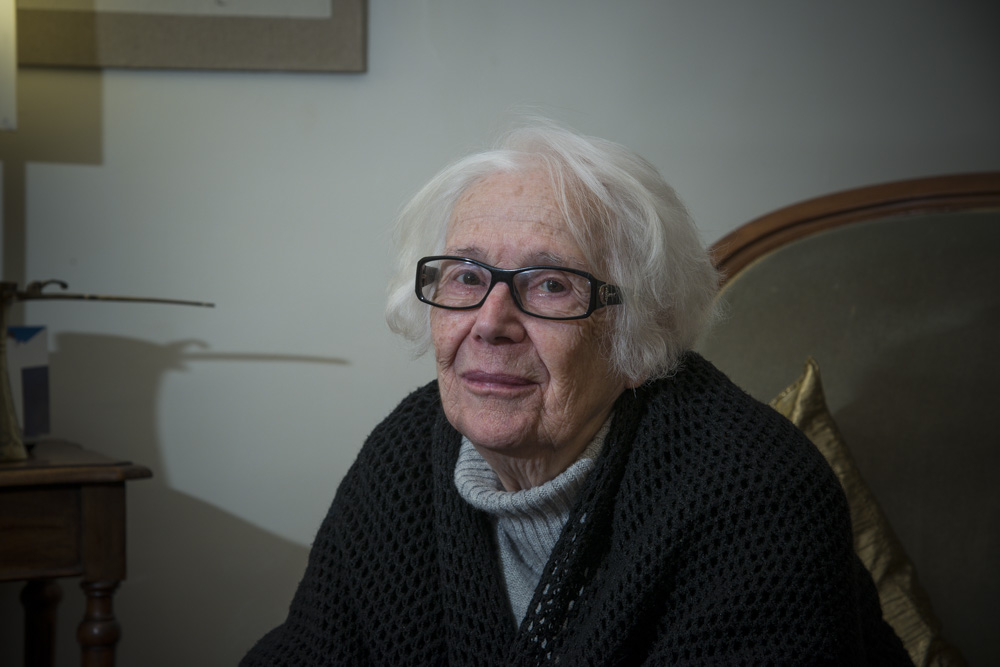
Abdelhamid MEHRI : Ancien Ministre du GPRA en exil à Tunis de 1958 à 1961. Il rencontre Fanon à Blida et le retrouve à Tunis quelques années plus tard dans le cadre de leurs activités militantes.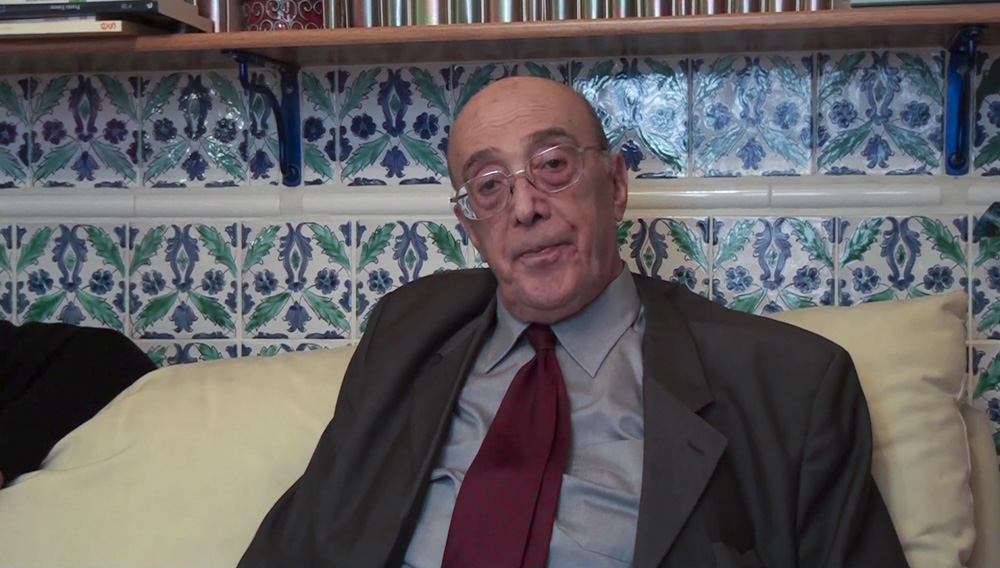
Jacques LADSOUS : Ancien résistant et éducateur au CEMEA (Centres d’Entraînement aux Méthodes d’Éducation Active) de Chréa, près de Blida en Algérie. Il rencontre régulièrement Frantz Fanon dans le cadre de leurs activités professionnelles et se lient d’amitié.
Arnoldo PALACIOS : Écrivain engagé colombien, rencontre Frantz Fanon lors du
deuxième congrès des écrivains et artistes noirs à Rome en 1959.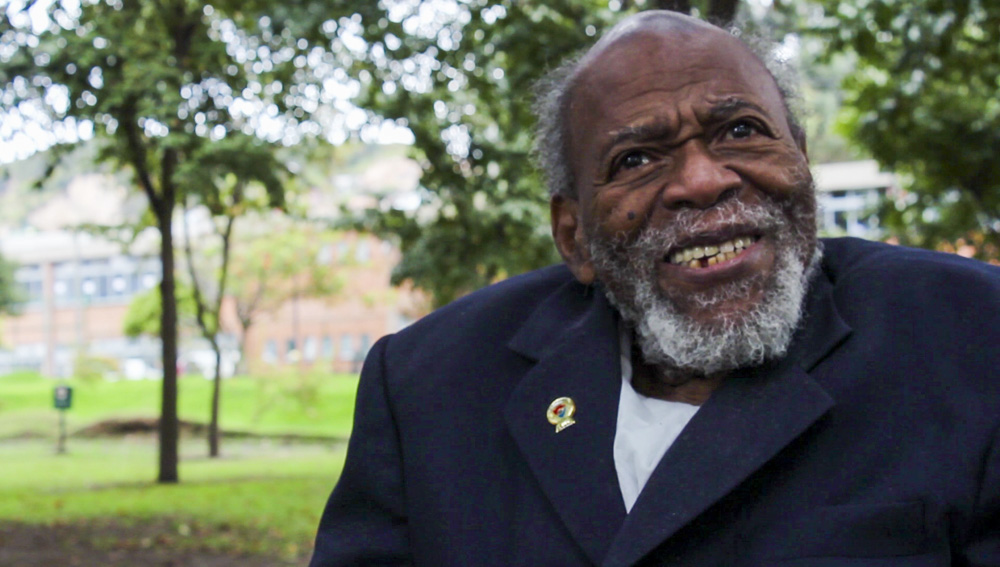
Pourquoi Fanon aujourd’hui :
Les analyses de Fanon tant sur le racisme que sur la décolonisation et les évolutions post-indépendances des pays libérés du colonialisme apparaissent aujourd’hui dans toute leur pertinence. Que ce soit en Occident où l’approfondissement de la crise générale du capitalisme mondialisé libère des forces que l’on croyait reléguées dans les poubelles de l’histoire ou dans ce qui se nommait hier le tiers-monde ou des dictatures absurdes ont effacés le leg des insurrections libératrices.
« Le gouvernement national, s’il veut être national, doit gouverner par le peuple et pour le peuple, pour les déshérités et par les déshérités. Aucun leader quelle que soit sa valeur ne peut se substituer à la volonté populaire et le gouvernement national doit, avant de se préoccuper de prestige international, redonner dignité à chaque citoyen, meubler les cerveaux, emplir les yeux de choses humaines, développer un panorama humain parce qu’habité par des hommes conscients et souverains. »
CHAPITRE 3 Les Damnés de la Terre, 1961, rééd., La Découverte, 2002
Fanon sans jamais verser dans le dogme ou une théorisation rigide apporte un regard toujours novateur sur la jonction des luttes politiques et la désaliénation des individus.
C’est sans doute à ces différents égards que le renouveau de l’intérêt pour les œuvres de ce grand militant panafricain de la libération de l’Algérie, ce résistant français et ce psychiatre martiniquais. Fanon retrouve toute son originalité dans le contexte des luttes antiracistes et postcoloniales dans un monde ou la contre-révolution néoconservatrice impose un ordre global sanglant et radicalement inégalitaire.
« Ne payons pas de tribut à l’Europe en créant des états, des institutions et des sociétés qui s'en inspirent. L'humanité attend autre chose que cette imitation caricaturale et dans l'ensemble obscène.
Si nous voulons transformer l'Afrique en une nouvelle Europe, l'Amérique en une nouvelle Europe, alors confions à des Européens les destinées de nos pays. Ils sauront mieux faire que les mieux doués d'entre nous. Mais si nous voulons que l'humanité avance d'un cran, si nous voulons la porter à un niveau différent de celui où l'Europe l'a manifestée, alors il faut inventer, il faut découvrir.
Si nous voulons répondre à l'attente de nos peuples, il faut chercher ailleurs qu'en Europe.
Davantage, si nous voulons répondre à l'attente des Européens, il ne faut pas leur renvoyer une image, même idéale, de leur société et de leur pensée pour lesquelles ils éprouvent épisodiquement une immense nausée.
Pour l'Europe, pour nous mêmes et pour l'humanité, camarade, il faut faire peau neuve, développer une pensée neuve, tenter de mettre sur pied un homme neuf. »
Conclusion de Les Damnés de la Terre, 1961, rééd., La Découverte, 2002
Etat des lieux : les 26 minutes base d’un documentaire plus long
Tenu par des délais réduits et sans autre budget qu’une dotation de 5000 euros (dont trois milles euros de la Fondation Frantz Fanon et deux milles du réalisateur, une ébauche de 26 minutes a été préparée pour le 9 décembre 2015 et a été projetée à l’Institut du Monde Arabe lors de la première journée des Rencontres sur Frantz Fanon.
Le parti-pris méthodologique a consisté à présenter les différents aspects de la vie professionnelle et politique de Fanon uniquement à travers le regard de ceux qui l’ont connu au cours des différentes phases de sa brève existence.
Pourquoi cette extension ?
Réalisé avec des moyens rudimentaires dans des délais très réduits, ce très court métrage a néanmoins rencontré un public intéressé et qui a exprimé une frustration certaine devant la brièveté des interventions et du film en général. Le film a été applaudi mais beaucoup de spectateurs ont souhaité qu’il soit plus exhaustif.
Nous disposons de nombreuses heures d’enregistrement de témoins qui ont côtoyé Fanon à différentes étapes de sa vie et dans les moments les plus exaltants comme les plus incertains. Enrichir le film préexistant en développant les aspects les plus révélateurs de ces entretiens tout en illustrant les diverses phases historiques contribuerait certainement à mieux faire connaître l’homme et à appréhender son œuvre avec davantage de précision et de profondeur. Soit un documentaire de 52 minutes.
Pourquoi le financer ?
Trois voyages ont été effectués en Algérie, en Tunisie et au Niger afin de réaliser interviews, plans de coupe et prises de contacts. Tout cela s'est effectué en auto production par la Fondation Frantz Fanon et le réalisateur en fonds personnels.
Votre participation est aujourd'hui sollicitée pour la dernière ligne droite menant à la post-production : achats d'images d'archives, montage, étalonnage, mixage, création du Master de diffusion (DCP), édition de DVD et support de communication.
Détail du budget « Fanon hier, Fanon aujourd'hui : Regards croisé » de 11 000€
- L’achat d'images d'archives avec les frais de déplacements à l'étranger compris.
- Le Montage
- L’étalonnage cinéma et le mixage son : étapes indispensables de la post-production. L'étalonnage consiste à régler la luminosité et les couleurs des différents plans du film et des différentes caméras pour les harmoniser. Au mixage tous les réglages des sons du film ont lieu, afin de les harmoniser. On y incorpore la musique et des sons d’ambiance. Dans les deux cas, cela nécessite la location d’une salle équipée d’un certain type de matériel et le travail de professionnels. Une fois ces deux étapes achevées, il est indispensable d'obtenir une sortie sur un Master DCP (Digital Cinema Package)
, format de diffusion des salles de cinéma.
- Le sous titrage en anglais, espagnol et arabe
- Création de DVD et affiches
Que ferons nous de votre argent si la collecte dépasse 11000€ ?
Au-delà de 11000 €, vos dons permettront de remplacer quelques équipements techniques utilisés lors de la prise de vue documentaire (camera, ordinateur ...) et être prêts pour de nouveaux projets!
Présentation de l'équipe
Réalisation : Hassane Mezine
Images et sons :
- Hassane Mezine
- Saïd Mekki
- Diana Paola Gómez Mateus
- Tomislav Jancar
Montage :
-Oriane Brun-Moschetti
Traduction français/anglais :
Fatimata Vetu
HASSANE MEZINE
Hassane Mezine, Photographe professionnel est né en 1972. Après un passage à l'AFP photo et France soir, il devient photographe Freelance. Il est également formateur en photographie numérique et multimédias à Paris. Il suit l'actualité sociale en France et à l'étranger.
En 2004 il enrichit son expérience de photographe sur le tournage du film «Algérie Tours/Détours» de Leila Morouche et Oriane Brun, en compagnie de René Vautier, l'indomptable cinéaste anti colonial. Cette expérience sera un tournant photographique. En 2016 il travaille au Niger sur le tournage de la série «Delou» en langue hausa en 52 épisodes en tant que Directeur de la photo. En 2015 il entame la réalisation de son premier documentaire vidéo sur Frantz Fanon.
FRANTZ FANON EN QUELQUES REPÈRES
Né en 1926 et mort en 1961, Frantz Fanon n'a vécu que 36 ans. Pour beaucoup il est l'homme d'un seul combat universel et de deux livres. Pourtant sa vie tumultueuse est riche de rencontres et de découvertes.
Son engagement, c'est la liberté et l'émancipation des hommes. Ses deux livres : Peau noire, masques blancs écrit en 1952 et Les damnés de la Terre écrit peu de temps avant sa mort en 1961.
C'est l'histoire d'un homme qui très tôt se rebelle contre l’injustice. Très jeune, il refuse le fascisme, quitte sa Martinique natale en 1943 et rejoint les Forces Françaises libres. En combattant le nazisme en Europe il rencontre dans toute sa brutalité le racisme de ceux qu’il croyait libérer. Dans une lettre à ses parents il relate sa stupéfaction de découvrir le racisme et l’ingratitude blanche, il avoue avec amertume s’être trompé de combat.
En 1947, Fanon entame des études de médecine à Lyon. Il fréquente également les cours de philosophie à l’université. Il se familiarise ainsi avec les débats intellectuels de l’époque et rencontre la pensée politique et contemporaine, de Marx à Merleau-Ponty, de Freud à Sartre.
Sa thèse de doctorat devait être initialement son œuvre première, Peau noire, masques blancs. Mais au vu du contenu très peu conventionnel du texte, ses professeurs lui demandent de produire une thèse plus conforme aux usages de la faculté. Il s’exécute et obtient ainsi son diplôme de médecin. Peau noire, masques blancs sera publié en 1952 et tant par sa contribution décisive aux débats sur les pathologies du racisme que par un ton novateur, il suscite un intérêt que ne s’est jamais démenti depuis.
A l'hôpital de Saint-Alban, il rencontre François Tosquelles, un psychiatre républicain espagnol, qui va l'initier à de nouvelles formes de traitement de la folie : la psychothérapie institutionnelle. C'est l’enseignement de Tosquelles qui contribue à faire converger son analyse politique et sa pratique en tant que psychiatre et médecin.
En 1953, il est muté à sa demande en Algérie à l'hôpital de Blida-Jointville où il va révolutionner les méthodes en place, largement marquées par des pratiques inspirées des thèses raciales de l'école psychiatrique d'Alger du professeur Porot de sinistre mémoire. C’est à Blida qu’il rencontre des militants indépendantistes et rejoint la Révolution algérienne. Après avoir démissionné avec fracas de son poste, il rejoint Tunis et le FLN, puis tout en exerçant son métier, il devient l’un des cadres militants de la Révolution et l’un des théoriciens d’avant-garde de la libération Africaine.
En 1961, quelques jours avant sa disparition, paraît son livre testament, Les damnés de la Terre, ou entre éthique de l’engagement et principe de réalité, Frantz Fanon compose un hymne à la libération et à l'émancipation de l'homme. Loin de tout dogme, la lucidité et la clairvoyance caractérisent cette œuvre ultime. L’héritage de Frantz Fanon, le « guerrier silex » selon la belle formule de Aimé Césaire, est vivant, porté et renouvelé par tous ceux qui s’inspirent de son œuvre et de son parcours pour éclairer leur combat.
ENGLISH VERSION
Fanon Yesterday, Fanon Today: Converging Views
Frantz Fanon
What comes out after the reading of his biography is really frustrating: the brevity of the existence of Frantz Fanon and his accomplishments give us a hint of what his work and his thoughts could have been if he had lived a few more years, a few more decades.
How not to regret the time that this generous visionary lacked and what he could have produced. How much we miss his view today, even though its clarity remains intact as much as the power of its analysis. The thought of Fanon remains pervasive in all its incandescence in the news of the struggles for freedom and the disalienation of humanity. 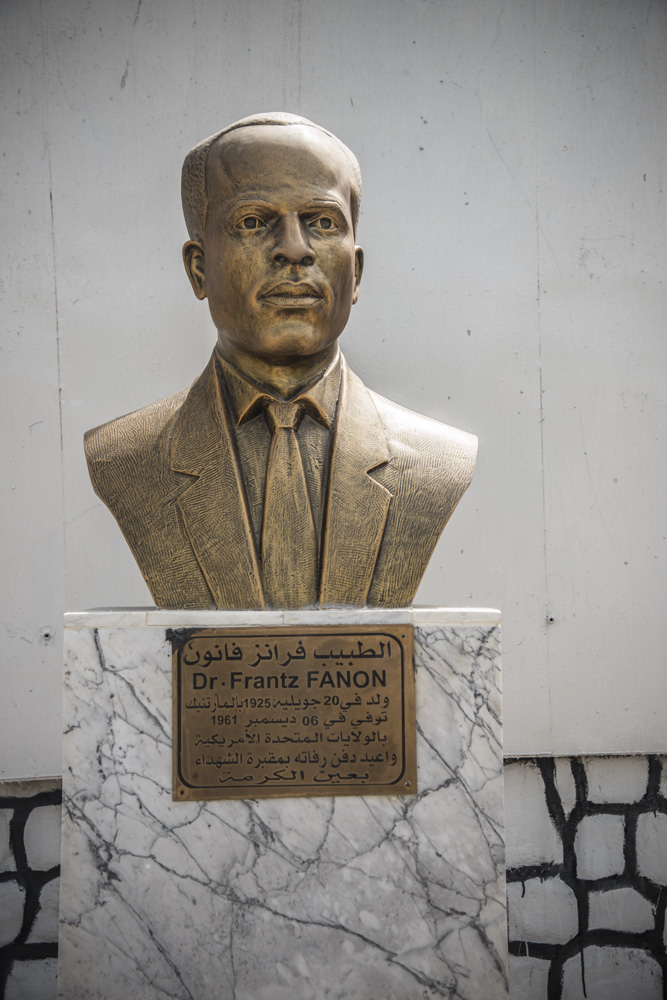
Film introduction
Fanon emerges from these testimonies as a human being without any other certainty than that of disalienation and freedom. Far from common beliefs, Fanon appears in its most human and political dimensions: nuanced, radical and measured.
We had the chance to meet and share with women and men who met Fanon, who had long conversations with him. None of those who have been sharing these moments with Fanon have forgotten the man and the passion that inhabited him.
These human eyes, sensitive and very diverse sketched the lively outlines of a personality: complex, rich, nourished by contradictions, but lucid, and with a mind always enlightened. These evocations allow to draw the portrait of a man engaged and vibrating a thousand miles away from embalming or from the iconification that hagiographies end up producing.
“O my body, make me always a man who questions!”
Ousmane DAN GALADIMA : Member of the Sawaba movement in Niger. He joined the F.L.N during the South front opening at the Malian border, there he met Frantz fanon. They met regularly in Accra, Ghana. 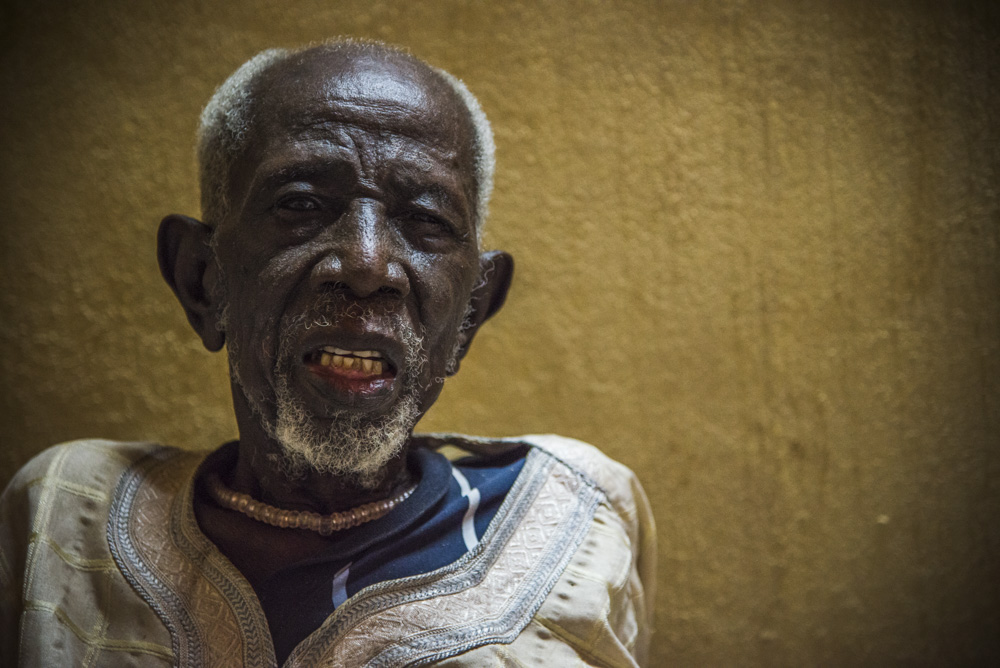
Lilian KESTELOOT : Former professor at l’U.C.A.D (University Cheikh Anta Diop) and former director of l’I.F.A.N (Institut Fondamental d’Afrique Noire) of Dakar. She met Frantz Fanon during the second Congress of Black Writers and Artists in 1959 in Rome and shared with him long discussions..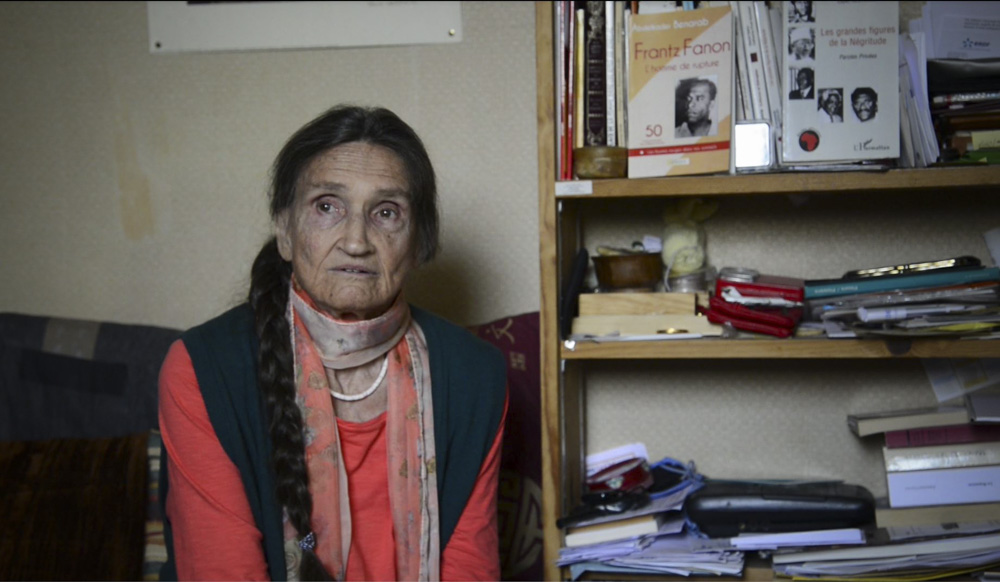 Marie-Jeanne MANUELLAN : Social worker at the CNPJ of Charles Nicolles hospital in Tunis where Frantz Fanon was psychatrist. She became a family friend and under his dictation typed several of his books with a typewriter.
Marie-Jeanne MANUELLAN : Social worker at the CNPJ of Charles Nicolles hospital in Tunis where Frantz Fanon was psychatrist. She became a family friend and under his dictation typed several of his books with a typewriter. 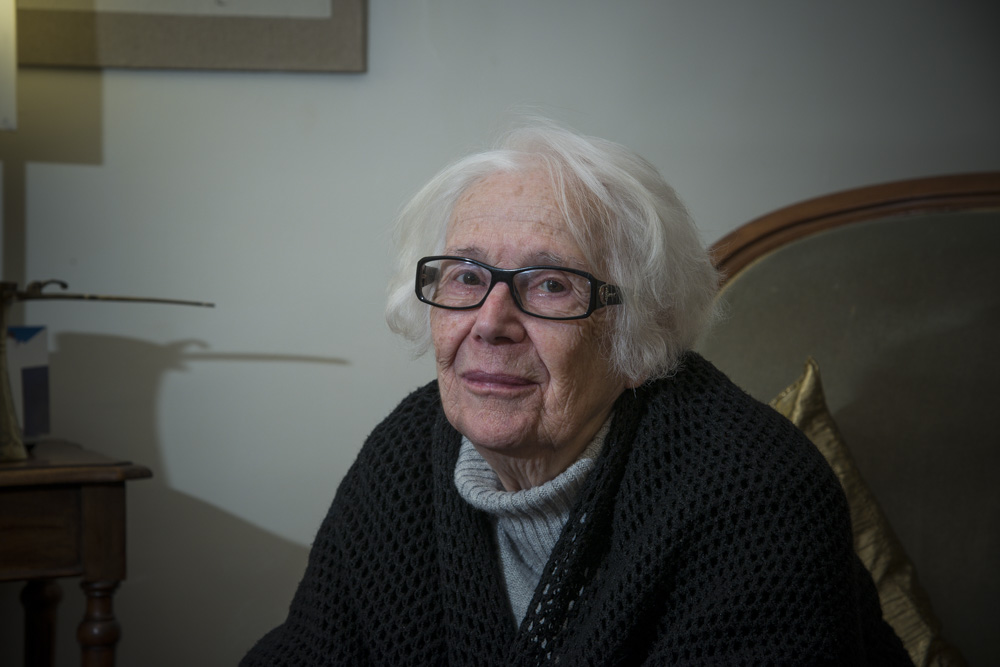 Abdelhamid MEHRI : Ancien Former minister of the GPRA in exile in Tunis from 1958 to 1961. He met Fanon in Blida and they met again in Tunis several years later during militant activities.
Abdelhamid MEHRI : Ancien Former minister of the GPRA in exile in Tunis from 1958 to 1961. He met Fanon in Blida and they met again in Tunis several years later during militant activities.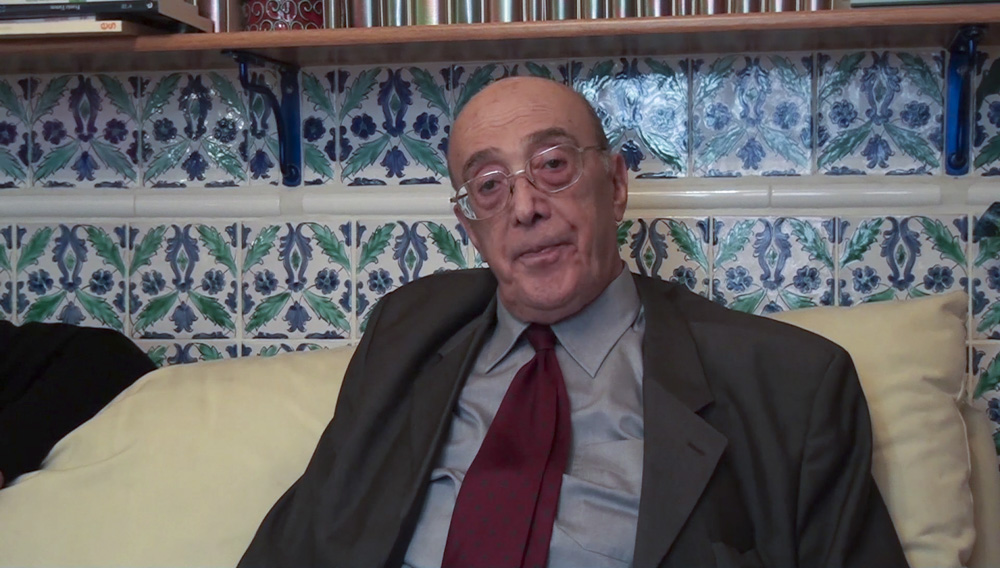
Jacques LADSOUS : Former resistant and educator at the CEMEA (Centres d’Entraînement aux Méthodes d’Éducation Active/National Movement of New Education) in Chrea near Blida in Algeria. He met with Frantz Fanon regularly during their professional activities and they developed a friendship. 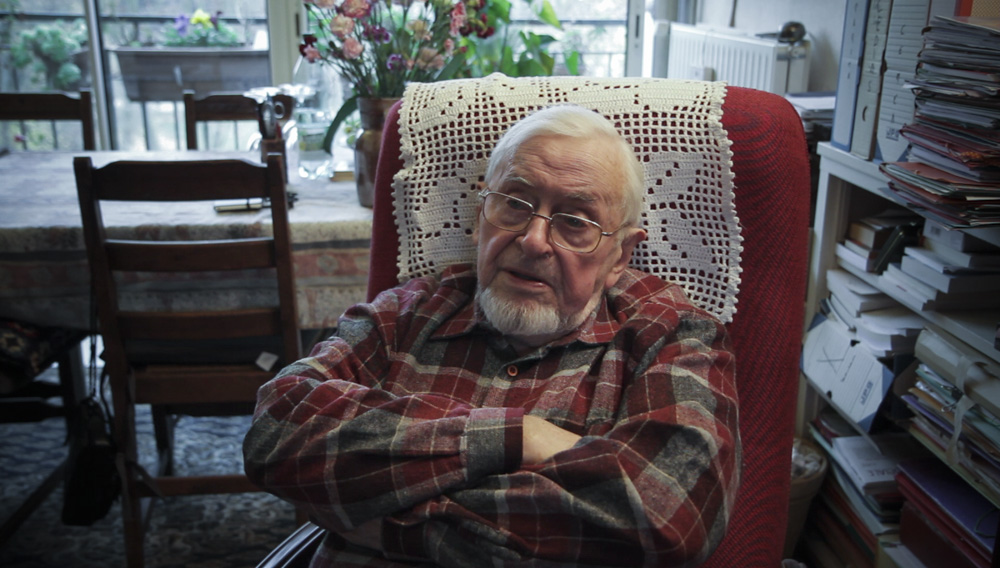 Arnoldo PALACIOS : Colombian activist and writer, he met Fanon during the second Congress of Black Writers and Artists in 1959 in Rome.
Arnoldo PALACIOS : Colombian activist and writer, he met Fanon during the second Congress of Black Writers and Artists in 1959 in Rome. 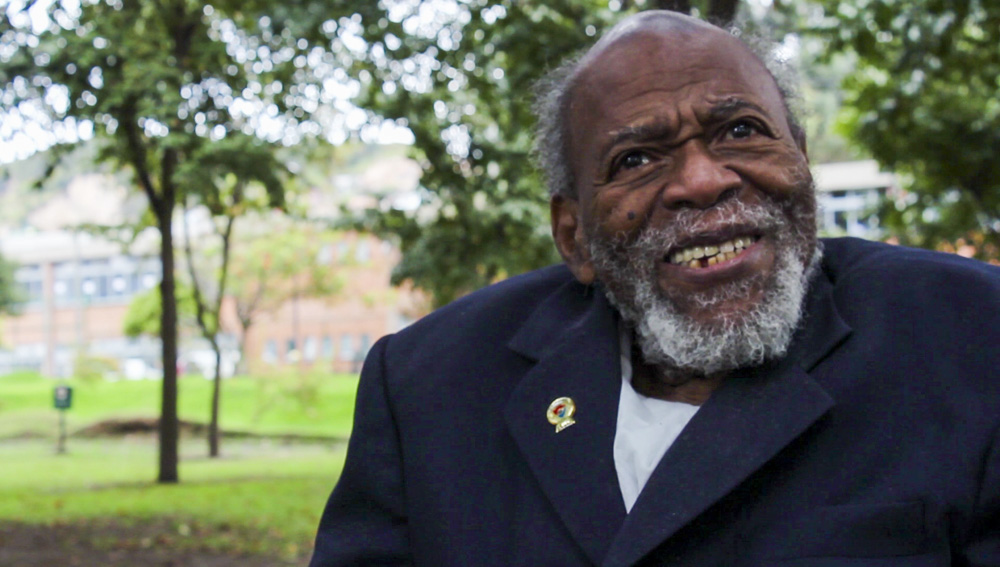
Why Fanon today ?
Today, Fanon’s analyses about racism, decolonization, and the post-independence evolution of the countries liberated from colonialism, appear in all their relevance; rather it is in Occident where the depth of capitalism’ global crises frees up forces that we thought relegated to the dustbin of history, or rather it is in what we commonly called yesterday “the third world”, where absurd dictatorships have erased the legacy of freedom insurrections.
“The national government, if it wants to be national, ought to be governed by the people and for the people, for the outcasts and by the outcasts. No leader, however valuable he may be, can substitute himself for the popular will; and the national government, before concerning itself about international prestige, ought first to give back their dignity to all citizens, fill their minds and feast their eyes with human things, and create a prospect that is human because conscious and sovereign men dwell therein.”
(Chapter 3: The Wretched of the Earth)
Fanon, without ever falling into dogmas, or rigid theorization, provides an innovative gaze to the junction between political struggles and individual disalienation. It is most likely from these various perspectives that the renew of interest for the work of this great pan-african activist of the Algerian liberation, this French resistant, and this Martiniquan psychiatrist comes from.
Fanon’s originality is found in the context of the antiracist and postcolonial struggles, in a world where the neo-conservative counter-revolution imposes a bloody and radically unequal global order.
« So, comrades, let us not pay tribute to Europe by creating states, institutions, and societies which draw their inspiration from her.
Humanity is waiting for something from us other than such an imitation, which would be almost an obscene caricature.
If we want to turn Africa into a new Europe, and America into a new Europe, then let us leave the destiny of our countries to Europeans. They will know how to do it better than the most gifted among us.
But if we want humanity to advance a step further, if we want to bring it up to a different level than that which Europe has shown it, then we must invent and we must make discoveries.
If we wish to live up to our people' expectations, we must seek the response elsewhere than in Europe.
Moreover, if we wish to reply to the expectations of the people of Europe, it is no good sending them back a reflection of their society and their thought with which from time to time they feel immeasurably sickened,
For Europe, for ourselves, and for humanity, comrades, we must turn over a new leaf, we must work out new concepts, and try to set afoot a new man »
(Frantz Fanon in The wretch of the Earth, Conclusion)
The 26 minutes basis for a longer documentary :
Restrained by limited time and with for only budget a 5000 Euros donation (of which 3000 Euros received from the Foundation Frantz Fanon), we’ve created a 26 minutes draft that was presented in Paris, on December 2015, at the Institut Du Monde Arabe during the first days of Fanon’s event.
The methodology bias we chose consisted in presenting different aspects of Fanon’s professional and political life, but only through the eyes of those who knew him during various phases of his short existence.
Why this extension ?
Produced with very limited tools and within a very tight deadline, this very short-film nonetheless received the public interest; a public who also expressed a relative frustration in regard to the brevity of the testimonies and of the film in general. The film was applauded and many viewers wished it was more comprehensive.
We have access to numerous hours of recording with witnesses who spent time with Fanon at various moments of his life: some during the most exhilarating times, some during the most uncertain.
We are extending to a 52 minutes documentary so as to enrich the pre-existing film by developing the most revealing aspects of the testimonies and illustrating the diverse historic phases. This would certainly contribute to better know the man and to present his legacy with more depth and precision.
Why this funding ?
We made three trips: in Algeria, Tunisia, and Niger in order to do interviews, cutaways, and create contacts. All has been auto-produced with private funds by the Frantz Fanon Foundation and by the film director. Today we ask for your participation for the last straight line before post-production: to buy archival images, for editing, calibration, mixing, the creation of the DCP (Digital Cinema Package), for the edition of the DVD and other communication medium.
Budget detail “ Fanon yesterday, Fanon today: converging views” 11.000Euros
- to buy archival images with the cost to travel abroad included.
- the Editing.
- Image Calibration and Sound Mixing: necessary steps in post-production. The calibration consist in adjusting brightness and colors of the various shots of the film from the different cameras in order to harmonize. During the mixing, all sound mixing takes place in order to harmonize as well; we bring music and other ambient sounds. In both cases the work requires to rent a well equipped studio as well as the work of professionals. Once these two steps are accomplished, it is necessary to obtain a broadcast master/DCP: the format used to diffuse in movie theaters.
- the subtitles in English, Spanish, and Arabic.
- creation of a dvd and posters
What will we do with your money if the donations exceeds € 11,000?
Beyond 11000€, your donations will allow to replace some technical equipments used during the documentary shooting (camera, computer...) and be ready for new projects !
The team
Director
- Hassane Mezine
Images and sound
- Hassane Mezine
- Saïd Mekki
- Diana Paola Gómez Mateus
- Tomislav Jancar
Editor
- Oriane Brun-Moschetti
Translation french/english
-Fatimata Vetu
HASSANE MEZINE
Hassan Mezine is a professional photographer born in 1972. After a brief transition at the AFP photo and France Soir, he became a freelance photographer. He is also an educator in digital photography and multimedia in Paris. He follows the social news in France and abroad.
In 2004 he enriched his photography experience during the filming of “ Algérie Tour detour” by Leila Morouche and Oriane Brun, with René Vautier, the indomptable anticolonial film-director. This experience will be a photographic turn. In 2016 he worked in Niger as Director of photography for the tv series “ Delou” in Hausa language and 52 episodes.
In 2015 he starts his first video-documentary on Frantz Fanon.
A FEW HIGHLIGHTS FROM FRANTZ FANON'S LIFE
Born in 1926 and died in 1961, Frantz Fanon only lived 36 years. For many he is the man of a single universal struggle and two books; yet his tumultuous life is full of encounters and discoveries.
His commitments were freedom and human emancipation. His two landmark books are: Black Skin, White Masks written in 1952 and The Wretched of the Earth written not too long before his death in 1961.
This is the story of a man who very early rebelled against injustice. At a young age he refused fascism, left his native Martinique in 1943 and joined the Free French Forces. While fighting Nazism in Europe, Fanon met, in all its brutality, the racism of those he believed he was freeing. In a letter to his parents he recounted his amazement discovering white racism and ingratitude. He bitterly admitted that he fought for the wrong struggle.
In 1947, Fanon began studying medicine in Lyon. He also attended philosophy college courses. He became familiar with the intellectual debates of the time and met with the political and the contemporary thoughts from Marx to Merleau-Ponty, from Freud to Sartre.
His doctoral thesis was originally intended to be his first work, Black Skin, White Masks. But given the very unconventional content of the text, his teachers asked him to produce a thesis more consistent with the purpose of the faculty. He complied with the demand and thus obtained his medical degree. Black Skin, White Masks was released in 1952 and both its decisive contribution to the debate on the pathologies of racism and its innovative tone produced an interest that since has never been denied.
At Saint-Alban hospital, Fanon met with François Tosquelles, a Spanish Republican psychiatrist, who introduced new forms of treatment for insanity : institutional psychotherapy. Tosquelles’ teachings contributed to converge Fanon’s political analysis and his practice as a psychiatrist and as a doctor.
In 1953, he requested to be sent to Algeria in Blida-Jointville hospital where he revolutionized the local methods, largely marked by practices inspired by the racial theories of Professor Porot, a sinister memory from the psychiatric school of Algiers . It is in Blida that Fanon met independence activists and joined the Algerian Revolution. After he publicly resigned from his position, he left to Tunis and joined the NFL (National Front of Liberation), and while practicing his profession, he became one of the senior Revolutionary activist and one of the vanguard theoretician of the African liberation.
In 1961, a few days before his death, he published his last book, The Wretched of the Earth, where between ethical commitment and principles of reality, Frantz Fanon composed a hymn to liberation and to human emancipation. Far from any dogma, lucidity and clairvoyance characterize his final work. Frantz Fanon’s legacy, the "flint warrior" according to the beautiful formula by Aimé Césaire, is alive, and brought renewed by all who are inspired by his work and his journey to illuminate their struggle.

